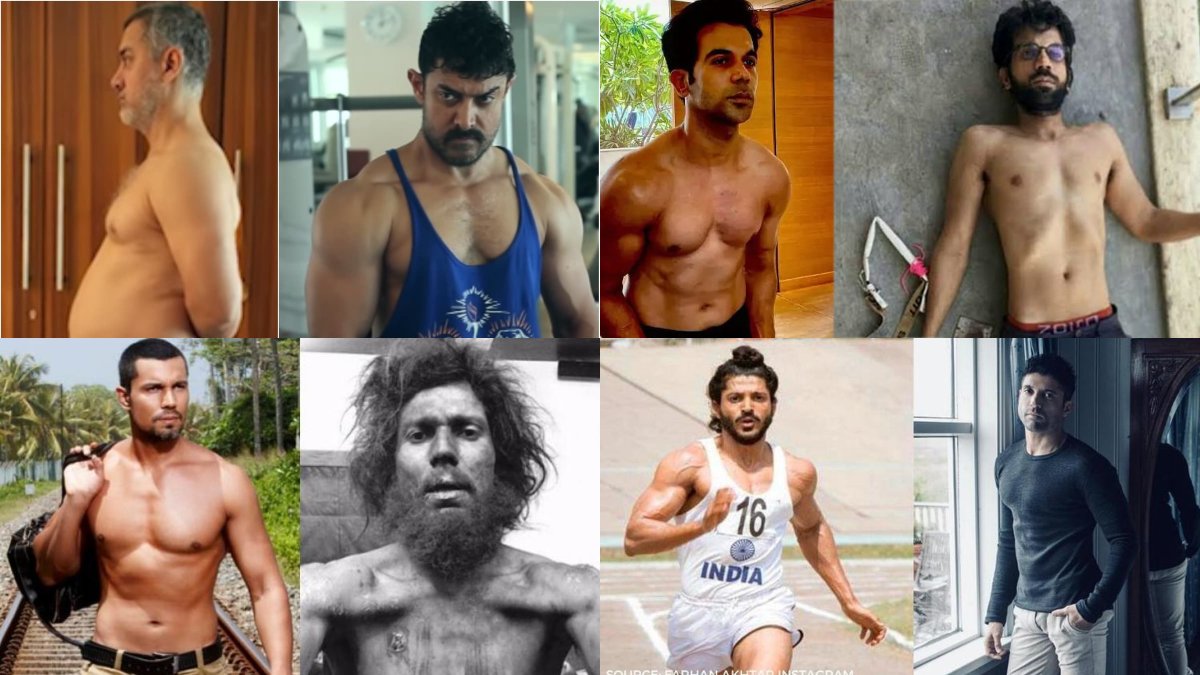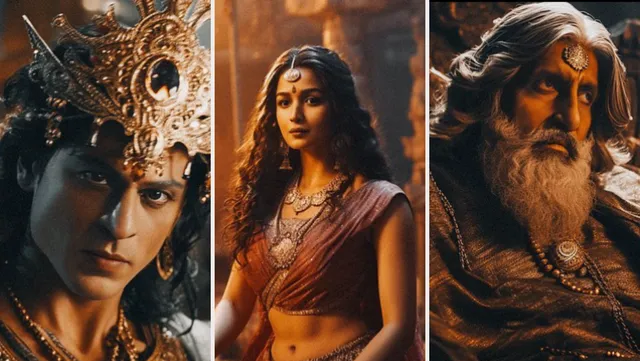Crafting Characters: The Artistry Behind Indian Actors’ Transformations
Indian cinema is renowned for its vibrant storytelling and dynamic characters. Central to this storytelling is the artistry of Indian actors, who bring depth and authenticity to their roles through meticulous preparation and transformative performances. This article delves into the artistry behind Indian actors’ character transformations, highlighting the techniques and dedication that define their craft.

The Process of Transformation
Research and Preparation
Indian actors often begin their transformation process with extensive research and preparation. To authentically portray a character, actors immerse themselves in the role by studying historical figures, real-life personalities, or fictional characters. Amitabh Bachchan‘s portrayal of an aging lawyer in Paa involved deep research into the medical condition progeria, which influenced his performance and physical appearance.
Vidya Balan similarly prepared for her role in The Dirty Picture by studying the life and career of Silk Smitha, a controversial actress from the 1980s. Balan’s commitment to understanding Smitha’s life and the social context of her era enriched her portrayal, making it both nuanced and impactful.
Physical Transformation
Physical transformation is a crucial aspect of an actor’s process, often involving changes in appearance, fitness, or skill acquisition. Ranveer Singh underwent significant physical changes for his role in Padmaavat, where he portrayed the antagonist Alauddin Khilji. Singh’s transformation included a change in body language, posture, and costume to embody the historical figure’s presence.
Similarly, Shah Rukh Khan underwent a dramatic weight loss and fitness regimen for his role in Chakde! India. Khan’s physical transformation not only enhanced his portrayal of a former hockey player but also demonstrated his dedication to the character’s athleticism and determination.
Emotional Depth and Characterization
Immersive Acting Techniques
Indian actors use various acting techniques to delve deep into their characters’ emotional landscapes. Method acting, Stanislavski techniques, and improvisation are among the methods employed to achieve authenticity. Irrfan Khan, known for his nuanced performances, often used method acting to explore the emotional core of his characters. His role in The Lunchbox showcased his ability to convey subtle emotions and inner conflicts, drawing the audience into his character’s world.
Naseeruddin Shah employs a combination of classical acting techniques and personal intuition. His portrayal in A Wednesday reflects his ability to blend intensity with vulnerability, creating a complex and compelling character.
Connecting with the Audience
A key aspect of crafting memorable characters is creating a connection with the audience. Indian actors strive to evoke empathy and relatability through their performances. Deepika Padukone’s role in Chennai Express demonstrated her ability to balance humor and emotional depth, making her character endearing and relatable to audiences.
Richa Chadha in Masaan provided a powerful performance that resonated with viewers through her portrayal of a young woman dealing with societal pressures and personal loss. Chadha’s ability to capture the character’s internal struggles and resilience established a strong emotional connection with the audience.
The Role of Collaboration
Working with Directors and Writers
The collaboration between actors, directors, and writers is crucial in bringing characters to life. Directors provide guidance and vision, while writers create the characters’ backgrounds and motivations. Rajkummar Rao’s transformative performance in Shahid was shaped by director Hansal Mehta’s direction and the film’s script, which explored the real-life story of lawyer Shahid Azmi.
Alia Bhatt‘s role in Raazi was a result of close collaboration with director Meghna Gulzar and the film’s writers. Bhatt’s portrayal of an Indian spy married to a Pakistani military officer required a deep understanding of the character’s psychological and emotional conflicts, facilitated by effective collaboration with the film’s creative team.
Costume and Makeup
Costume design and makeup play significant roles in character transformation. Indian actors often work closely with costume designers and makeup artists to create a believable look that enhances their portrayal. Kangana Ranaut’s role in Manikarnika: The Queen of Jhansi involved elaborate period costumes and makeup, reflecting the historical accuracy and grandeur of the character.
Aishwarya Rai Bachchan‘s transformation into a courtesan in Devdas was achieved through intricate costumes and makeup, which highlighted the character’s opulence and emotional depth. The collaboration between Rai Bachchan and the film’s design team was essential in achieving a visually stunning and authentic representation.
The Impact of Transformative Performances
Influencing Cinema Trends
Transformative performances often influence trends in cinema, inspiring new storytelling techniques and character portrayals. Amitabh Bachchan’s role in Silsila showcased his ability to navigate complex emotional scenarios, influencing the depiction of romantic and dramatic roles in Bollywood.
Kalki Koechlin’s role in Dev.D brought a modern twist to the traditional narrative of Devdas, challenging conventional portrayals and influencing future filmmakers to experiment with genre and character dynamics.
Setting New Standards
Indian actors who deliver transformative performances set new standards for acting excellence. Their ability to fully embody characters and convey complex emotions raises the bar for future actors and filmmakers. Ranbir Kapoor‘s performance in Sanju, portraying actor Sanjay Dutt, set a new benchmark for biographical films, showcasing the depth and complexity that can be achieved in portraying real-life figures.
Conclusion
The artistry behind Indian actors’ transformations is a testament to their dedication, skill, and creativity. Through meticulous research, physical changes, emotional depth, and collaborative efforts, these actors craft characters that leave a lasting impact on audiences and influence the broader cinematic landscape. As Indian cinema continues to evolve, the artistry of these transformative performances will remain a defining element, shaping the future of storytelling and character portrayal.



